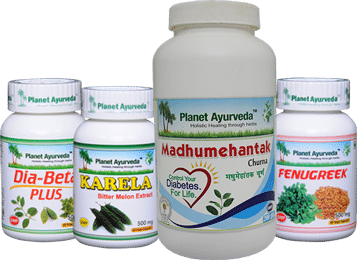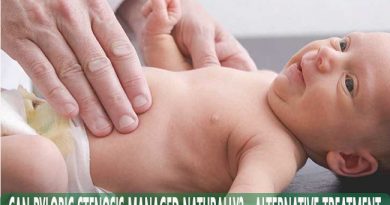Ayurveda and Natural Ways to Control Diabetes Mellitus
Abstract
Diabetes is another name for diabetes mellitus. Diabetes mellitus affects 77 million persons in India today. It’s no surprise that the figure is expected to soar to 134 million by 2045. It is mostly a pancreatic condition that produces the hormone insulin. Diabetes is classified as an endocrine disease, which is a chronic (long-term) disorder. Let’s Discuss it in detail!

Introduction
Diabetes Mellitus (Madhumeha) is high blood sugar levels above 120 mg/dl. It is a class of metabolic illnesses characterised by hyperglycemia and caused by decreased insulin secretion, decreased utilisation, and increased glucose synthesis. According to Ayurveda, diabetes mellitus, also known as Madhumeha, is characterised by the secretion of a sweet fluid similar to honey in urine. It’s a silent killer.
Types of Diabetes Mellitus
Genetic form (Sahaja Prameh)
Compared with IDDM (Insulin Dependent diabetes mellitus) or type 1 DM.
Acquired form (Aapathyanimetaja Prameh)
compared with NIDDM (Non Insulin Dependant Diabetes Mellitus) or type 2 DM.
Gestational Diabetes
Which may occur only in pregnancy. This usually disappears after pregnancy but increases the risk of diabetes in the child.
Causes
- Sedentary lifestyle
- Lack of physical activities and exercise.
- Comforts of sleeping and excess sleep.
- All food and lifestyle activities which increase kapha sahaja (inherited factor)
- Chinta (stress)
- Bhaya (fear)
- Satholya (overweight)
- Improper function of pancreas
Sign and Symptoms
- Excessive thirst
- Increased appetite
- Hair fall
- Increased urination
- Weight loss/ Weight gain
- Tingling sensation
- Numbness
- Constipation
- Fatigue
- Heatness in hands and feet
- Bed wetting in children
Criteria for Diagnosis of Diabetes Mellitus
Blood sugar Normal range Diabetes
Fasting glucose 110 mg/dl 126 mg/dl
Postprandial glucose 140 mg/dl 200 mg/dl
Random glucose – 200 mg/dl with symptoms
Complications
Metabolic
- Ketoacidosis, coma
- Hyper osmolar, non ketotic coma
Infection
- Bacterial / fungal infection of skin mucosa, UTI, Lungs etc
Hypoglycemia
Neuropathy
- Somatic poly and Mononeuropathy
Micro Vascular
- Retinopathy(blindness)
- Nephropathy (ESRF)
Macro Vascular
- Coronary artery disease
- Angina or MI
- Peripheral vascular disease
- Atherosclerosis
Ayurvedic Medicines
Shiva Gutika (shilajatu, triphala, kutaki etc.) – 250-500mg
- Chandraprabha vati ( shilajatu, triphal, trikatu etc.) – 250-500mg
- Indravati (ras sindur, vadang, arjun etc.) – 250-500mg
Najogradhad churna (ashwath, amaltas, badd,asn etc.) – 3-6gm - Triphala churna (haritaki, bibhitaki,amalaki) – 3-6gm
- Vidang adi kwath – 20-40ml
- Triphala aadi kwath
- Salsaradi gana kwath
- Lodhrasava (lodhra, ksarpur, pushkarmool etc.) – 20-40ml
- Devdarvadi arishta ( devdaru, vasa, manjistha etc.) – 20-40ml
- Dhanwantaram ghrita (dashmool, karanj, devdaru etc.) – According to need
- Pramehmihhar taila (shatapushpa, devdaru, haridra) – According to need
Vadang avleh (vadand, madhu, gandhak etc.) – 5-10gm - Amalaki rasayan
- Shilajatu kalp – 5kg
Treatment
- Samsothn chikitsa
- Samshamn chikitsa
- Proper diet
- Exercise
- Insulin therapy for diabetes mellitus type 1
Samsothn Chikitsa
Sanehn
- 3- 5 days triphala ghrita, Pipali ghrita from Abhyantra sneha Kushti sothi or guda (jaggery) ,dahi,milk, jaley animals meat snehn hetu no use.
Samsodhan
- kaphaja prameh – vaman, pitta prameh – virechna,
- Vaman and virechana are of the tikshna type.
- Priyangu aadi gana with sidha ghrita or taila use.
- After virechana suraadi gana kshaya mixture with sunthi, devdaru, mustak churna,madhu or sandhav for asthapna vasti.
Basti
- Pancha tikta panchprasritniruh basti
- Mustadi yapana basti
- Prameha har asthapana basti
- Madhutaikik basti
Samshamn Chikitsa
Physical Exercise
- Kusghati, gaj turang rath pdaticharya,dhanush etc.
- Ruksha anpana
Natural Ways to Control Diabetes Mellitus
1. Giloy
”Tinospora cordifolia,” which is believed to contain qualities that aid in the burning of surplus glucose in the body, helping to balance blood sugar levels. This herb is a hypoglycemic agent, which means it helps to lower the level of glucose in the body.
2. Vijaysar
(Pterocarpus Marsupium) Use – Vijaysar tumblers are widely accessible. Simply pour water into the tumbler and leave it overnight. Drink it first thing in the morning. Vijaysar could also be used as a powder. This herb’s hypolipidemic qualities aid to lower total cholesterol, total density lipoprotein, and serum triglyceride levels in the body. Keep blood sugar levels stable and diabetes under control.
3. Gymnema (Gurmar)
Due to its anti-oxidant and anti-inflammatory qualities, Gymnema (Gurmar) is useful in the treatment of type 2 diabetes. It protects pancreatic cells from damage caused by free radicals and promotes insulin release, lowering blood sugar levels. Half an hour after lunch and dinner, drink a teaspoon of powdered gurmar leaves with water. This may influence glucose absorption in the body. It is the primary herb used to treat diabetes mellitus, and it has the property of eliminating sugar by reducing sugar cravings.
4. Sadabahar
You need to chew fresh leaves to manage blood sugar level naturally. Another way to use it is to take pink coloured flowers from the sadabahar plant and boil them in a cup of water. Strain the water and drink every morning on an empty stomach.
5. Amla
Drinking amla juice is another efficient way of consuming amla. Another way to consume amla in the form of murabba. Amla powder is another way of consuming it. Just take a spoonful and have it with water.
6. Neem Patra
For non-ketotic and insulin-sensitive diabetics, neem patra extracts help lower insulin requirements. It slows blood coagulation, which calms irregular heartbeats and, as a result, can lower blood sugar levels.
7. Tulsi
Tulsi is a pre-diabetic herb. Antioxidants are abundant. You can consume tulsi by simply chewing them. Another way to use it is by brewing it with tea every day.
8. Methi seeds (Fenugreek)
Methi can help diabetics control their blood sugar levels. Contain fibre and aid in delaying digestion, hence managing carbohydrate and sugar absorption. It also aids in the improvement of a person’s body’s usage of sugar. Use – you can take a few seeds, put them in water, and drink it early in the morning.
9. Black jamun (jamungiri)
It has hypoglycemic properties which has the ability to reduce sugar in blood and has antioxidants that make them amazing for diabetics. It certainly helps to enhance insulin activity and sensitivity. In addition it can be taken as an adjuvant both for type 2 diabetes, insulin dependent or non insulin dependent. Chew as raw black jamun
10. Bitter gourd (karela)
It contains at least three active ingredients with anti-diabetic characteristics, including charanti, which has been shown to reduce blood glucose levels and polypeptide-p, an insulin-like chemical. These substances either function alone or in combination to lower blood sugar levels. Use – take it as a juice. Rich in hypoglycemic bio chemical substance. Good to manage blood sugar level.
11. Bael leaves
You can incorporate it into your diet by chewing 3-4 fresh bael leaves first thing in the morning. On an empty stomach, people frequently chew tulsi and bael leaves together. Bael leaves can give the pancreas energy. Insulin production is increased even more when the pancreas is booted.
12. Garlic (Allium sativum)
Rasona is an Indian spice made from garlic. It is also known as Maha Aushadhi and kalyankari in Ayurveda. To treat diabetes, chew 2-3 garlic cloves every morning or take 250 mg of triphala (kept in mouth).
13. Haldi (Curcuma longa)
Haridra is extremely effective in the treatment of diabetes. Consume Haridra and Adrak as part of your diet. Take 6 ml of raw turmeric juice two times per day. Take 8 grams of powdered turmeric with water if you have an increased frequency of urination.
14. Dalchini (Cinnamomum Zeylanicum)
Dalchini is also beneficial in diabetes management because it lowers cholesterol and blood glucose levels. Boil a pinch of dalchini powder in water. Consume two times every day.
15. Fig Leaves (Ficus carica)
Fig has a lot of health benefits Including Diabetes. Take 5 – 6 fig leaves, Boil them, Filter it and let them cool. Consuming this will control blood glucose level.
Herbal Remedies for Diabetes Mellitus by Planet Ayurveda
Planet Ayurveda offers the greatest herbal remedy combination, such as the diabetic neuropathy care pack, for the ayurvedic treatment of diabetes mellitus. Strictly adhere to ayurvedic principles and use only the highest grade herbs to make herbal treatments. Planet Ayurveda remedies are 100% pure, vegetarian, and natural. Medicines do not contain any additions, preservatives, or chemicals. These have no negative effects and are completely risk-free.
Product for Diabetes
- Dia beta plus
- Karela capsules
- Fenugreek capsules
- Madhumehantak Churna
Product description
1. Dia Beta Plus
This polyherbal capsule is prepared using Gurmar (Gymnema Sylvestre), Karela (Momordica charantia), Tulsi (ocimum tenuiflorum) etc. It is a blend of herbs that are extremely effective at lowering blood sugar levels. The herbs in this blend balance vata kapha, the fundamental cause of diabetes. It also aids in the prevention of diabetic neuropathy, retinopathy, and other issues. It contains anti-inflammatory and antioxidant effects. It fortifies the body, boosts the immune system, and promotes normal body function.
Dosage – 1- 2 capsules twice daily after meals with warm water.
2. Karela Capsules
It consists of bitter gourd (Momordica Charantia). Karela has a bitter taste thus it is very useful in managing diabetes. Karela also helps in balancing kapha and vata dosha so expels excessive kapha out from our body and assists in managing diabetes.
Dosage – 1- 2 capsules, twice daily, after a meal.
3. Fenugreek Capsules
Fenugreek Capsules are prepared using standardised extract of Fenugreek (Trigonella foenum-graecum). It is important to lower blood sugar levels by slowing carbohydrate digestion and absorption because the combination of galactomannan and fenugreek inhibits sugar absorption in the bloodstream.
Dosage – 1- 2 capsules, twice daily, after a meal.
4. Madhumehantak Churna
This is powder preparation prepared using Saptrangi (salacia chinensis), Daruhaldi (berberis aristata), Bilva patra (aegle marmelos), Gurmaar (gymnema sylvestre) etc. It is the most effective diabetes combination. The Salacia chinensis and petrocarpus marsupium prove their efficacy in controlling diabetes.
Dosage – 1-2 tsp twice daily with warm water
Contact Planet Ayurveda Support Team to provide you the costing/ordering and delivery information at – costing.planetayurveda@gmail.com or Call at 0172-521-4040 (India), +91-172-521-4040 (Outside India) or Whatsapp at (+91) 842-749-4030
Conclusion
Diabetes is a chronic disease that worsens over time. Half of all cardiovascular disease is caused by a Vata kapha constitution. There is a kapha vata prakriti dominance or a strong association with risk factors, inflammatory markers, cytokines, and insulin resistance. Ayurvedic treatment regimens for madhumeha (diabetes mellitus) aim to address metabolic abnormalities and lead a healthy life. Madhumeha therapy may not be the sole way to achieve hypoglycemia.






